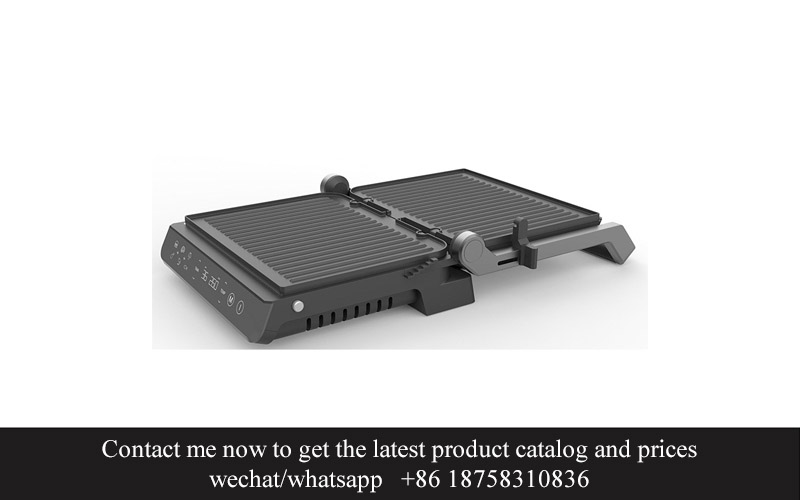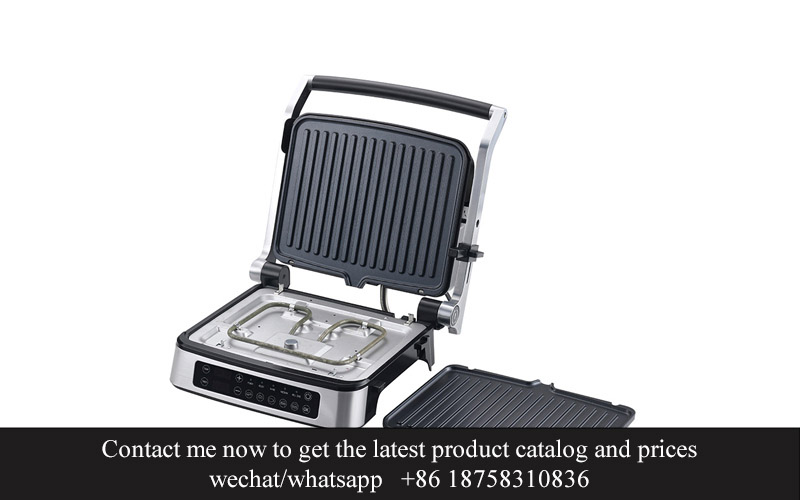Address
304 North Cardinal
St. Dorchester Center, MA 02124
Work Hours
Monday to Friday: 7AM - 7PM
Weekend: 10AM - 5PM
Address
304 North Cardinal
St. Dorchester Center, MA 02124
Work Hours
Monday to Friday: 7AM - 7PM
Weekend: 10AM - 5PM

In an era where technology and convenience reign supreme, the small appliance market has seen a surge in demand. As entrepreneurs and online sellers look for innovative ways to tap into this burgeoning sector, the concept of drop shipping from China has emerged as a game-changer. This approach not only allows for a wide range of product offerings but also minimizes upfront investment and logistical hurdles. Let’s delve into the reasons behind choosing small appliances for drop shipping, the vibrant Chinese market that fuels this industry, and the future innovations that are shaping the landscape of kitchen appliances. Moreover, we’ll explore the importance of staying informed with industry trends and data analysis, the intricacies of navigating the drop shipping process from China, the challenges and solutions within this niche, the pivotal role of e-commerce platforms, and how understanding customer preferences and market segmentation can lead to successful ventures. As we draw to a close, we’ll reflect on the significance of embracing the small appliance drop shipping wave and the opportunities it presents for those willing to adapt and innovate.
The digital era has ushered in a new wave of global trade, and at the forefront of this revolution is the rise of small appliance drop shipping. This innovative business model is not just a trend; it’s a game-changer for entrepreneurs looking to tap into international markets with minimal upfront investment.
Small appliances, once a niche category, have now become a staple in households across the globe. From the humble blender to high-tech smart kitchen gadgets, these devices have found their way into kitchens of all sizes, transforming the way we prepare and enjoy our meals. This surge in popularity has opened up a world of opportunities for drop shipping businesses, allowing them to reach customers in distant lands with ease.
The beauty of small appliance drop shipping lies in its simplicity and scalability. Unlike traditional retail, where inventory management and storage can be a daunting task, drop shipping lets you focus on marketing and customer service. By partnering with reliable suppliers in countries like China, you can offer a wide range of products without the need for a physical warehouse or a large upfront inventory.
In the past, international trade barriers and logistical challenges made it difficult for small businesses to enter foreign markets. However, advancements in e-commerce platforms and logistics services have made it feasible to ship products directly from China to customers around the world. This direct connection between suppliers and consumers has democratized the global market, giving rise to a new breed of entrepreneurs who can now compete on a global scale.
One of the key factors driving the growth of small appliance drop shipping is the increasing demand for convenience and efficiency in daily life. Modern consumers are looking for quick solutions to streamline their routines, and small appliances are the perfect answer. Think about the sleek design of a portable air fryer or the intuitive interface of a smart oven; these are products that resonate with the fast-paced lives of today’s consumers.
The Chinese market, in particular, has been a hotbed of innovation in the small appliance sector. With its vast manufacturing capabilities and competitive pricing, China has become a leading exporter of small appliances. From the bustling streets of Shanghai to the serene countryside, Chinese manufacturers are constantly pushing the boundaries of design and functionality, offering a plethora of choices for drop shipping businesses to explore.
In the realm of small appliance drop shipping, there’s no shortage of exciting products to choose from. From kitchen gadgets that simplify cooking tasks to health and wellness devices that promote a healthier lifestyle, the market is diverse and dynamic. Entrepreneurs can select from a vast array of products, each with its unique selling points and target demographics.
But what sets the small appliance drop shipping market apart is not just the variety of products but also the rapid pace at which new trends are emerging. The ability to stay on top of these trends and adapt quickly is crucial for success. By leveraging the latest industry trends and data analysis, drop shipping businesses can identify market gaps and capitalize on opportunities before they become mainstream.
One trend that has gained traction in recent years is the integration of technology into small appliances. Smart kitchen gadgets, such as connected ovens or sous-vide devices, are becoming increasingly popular as consumers seek out ways to enhance their culinary experiences. This tech-savvy approach to appliance design not only adds value to the product but also opens up new avenues for marketing and customer engagement.
Another important aspect of small appliance drop shipping is the role of e-commerce platforms. These platforms have become the go-to destination for consumers looking for unique and innovative products. By leveraging the reach and customer base of established e-commerce platforms, drop shipping businesses can significantly reduce their marketing costs and reach a wider audience.
Despite the numerous advantages of small appliance drop shipping, there are challenges to navigate. Language barriers, cultural differences, and varying regulations can complicate the process. However, with careful planning and strategic partnerships, these challenges can be overcome.
In conclusion, the rise of small appliance drop shipping from China presents a compelling opportunity for entrepreneurs to expand their business globally. By capitalizing on the latest industry trends, leveraging the power of e-commerce platforms, and staying adaptable to market changes, businesses can thrive in this dynamic sector. The future of small appliance drop shipping is bright, and those who embrace it will undoubtedly find success in the global marketplace.

In the ever-evolving world of e-commerce, the concept of drop shipping has emerged as a game-changer for entrepreneurs and retailers alike. Among the myriad of products that can be sourced and sold through this model, small appliances have become a particularly attractive niche. Here’s why opting for small appliances in drop shipping is a smart move.
Small appliances are a staple in most households, from coffee makers and toasters to blenders and air fryers. Their widespread popularity means there’s a constant demand for these products. This consistent demand creates a stable market for drop shipping, as customers are always looking for the latest and greatest kitchen gadgets.
The low barrier to entry is another compelling reason to choose small appliances for drop shipping. These items typically have a lower price point compared to larger appliances, making them more accessible for small businesses and startups. This affordability allows entrepreneurs to test the waters without a significant upfront investment, reducing the risk of financial loss.
The variety of small appliances available is staggering. From eco-friendly and energy-efficient models to those with cutting-edge technology, there’s a vast array of options to cater to different customer preferences. This diversity ensures that there’s something for everyone, which can help attract a broader customer base and increase sales.
Another advantage of focusing on small appliances is the relatively short lead time for manufacturing and shipping. Since these items are often produced in bulk, suppliers can ship orders quickly, which is crucial for maintaining customer satisfaction and repeat business. This efficiency also means that you can restock your inventory more frequently, keeping your offerings fresh and up-to-date.
The competitive pricing of small appliances is a double-edged sword. On one hand, it can be challenging to differentiate your products from those of competitors. On the other hand, it can be a huge selling point for price-sensitive consumers. By leveraging the right marketing strategies and focusing on unique selling propositions (USPs), you can stand out in a crowded market.
The ease of marketing small appliances is another advantage. These products are often visually appealing and have a wide range of uses, making them perfect for social media campaigns and influencer partnerships. High-quality images and engaging content can quickly capture the attention of potential buyers, driving traffic to your online store.
Customer service is key in the drop shipping business, and small appliances offer a unique opportunity to provide exceptional service. Since these items are often used daily, customers may have questions or concerns about usage, maintenance, or troubleshooting. By offering personalized support and helpful resources, you can build trust and loyalty with your customers.
The scalability of small appliance drop shipping is a significant benefit. As your business grows, you can easily expand your product range without the need for additional inventory or storage space. This scalability allows you to adapt to market trends and customer demands without the constraints of traditional retail models.
Lastly, the eco-friendly aspect of small appliances cannot be overlooked. As more consumers become environmentally conscious, they are increasingly seeking out products that align with their values. By offering energy-efficient and sustainable small appliances, you can tap into this growing market segment and appeal to eco-conscious consumers.
In conclusion, the decision to focus on small appliances in drop shipping is a strategic one. With their widespread appeal, low barrier to entry, diverse range of products, and scalability, small appliances offer a solid foundation for e-commerce success. By understanding the unique advantages of this niche, you can position your business for growth and profitability in the dynamic world of online retail.

The Chinese market has long been a hub for innovation and manufacturing, and it’s no different when it comes to small appliances. This vast and diverse market presents a treasure trove of opportunities for drop shipping entrepreneurs. Let’s delve into what makes the Chinese market so enticing for those looking to sell small appliances online.
Rich Variety of Products – The sheer variety of small appliances available in China is staggering. From kitchen gadgets like blenders and toasters to personal care items such as hair dryers and electric toothbrushes, the options are nearly limitless. This variety allows drop shippers to cater to a wide range of customer needs and preferences.
Innovative Designs and Features – Chinese manufacturers are known for their innovative approach to design and functionality. They often incorporate the latest technology and trends into their products, making them highly appealing to tech-savvy consumers. Drop shippers can leverage this innovation to offer cutting-edge appliances that stand out in the market.
Competitive Pricing – One of the most significant advantages of sourcing small appliances from China is the competitive pricing. Manufacturers in China can produce goods at a lower cost due to efficient production processes, economies of scale, and a large pool of skilled labor. This allows drop shippers to offer competitive prices while still making a profit.
Quality Control – Despite the competitive pricing, Chinese manufacturers are increasingly focusing on quality control. With the rise of consumer awareness and demand for high-quality products, many Chinese factories are investing in better production standards and certifications. This ensures that drop shippers can provide reliable and durable appliances to their customers.
Customization Opportunities – The Chinese market offers excellent opportunities for drop shippers to customize products. Whether it’s branding appliances with their own logo or modifying features to suit specific market needs, the flexibility in customization allows drop shippers to create unique offerings that resonate with their target audience.
Diverse Product Categories – In addition to kitchen and personal care appliances, China produces a wide array of other small appliances, including health and fitness gadgets, cleaning tools, and even smart home devices. This diversity means that drop shippers can explore various niches and cater to different consumer segments.
Strong Supply Chain – China boasts a robust supply chain infrastructure, which is crucial for successful drop shipping. Efficient logistics, quick shipping times, and reliable suppliers ensure that drop shippers can maintain high levels of customer satisfaction. This is especially important when dealing with international orders.
Market Access and Exporting – For drop shippers looking to expand their business internationally, the Chinese market provides a gateway to global trade. Many Chinese manufacturers are experienced in exporting, making it easier for drop shippers to navigate the complexities of international shipping and compliance.
E-commerce and Online Sales Channels – China has one of the most developed e-commerce ecosystems in the world. With platforms like Alibaba, Taobao, and Tmall, drop shippers can easily find suppliers and source products. The established online sales channels in China also offer valuable insights into consumer behavior and preferences.
Sustainability and Eco-Friendly Trends – As environmental consciousness grows, Chinese manufacturers are increasingly focusing on sustainable and eco-friendly small appliances. This aligns with the global trend towards sustainability and provides drop shippers with a socially responsible product line that can appeal to environmentally conscious consumers.
Cultural Insights and Marketing Opportunities – Understanding the cultural nuances of the Chinese market can be a significant advantage for drop shippers. By tailoring their marketing strategies and product offerings to reflect Chinese values and preferences, drop shippers can build stronger connections with their target audience.
Continual Growth and Development – The Chinese market is dynamic and constantly evolving. This means that there are always new opportunities for drop shippers to capitalize on emerging trends and consumer needs. By staying informed and adapting to changes, drop shippers can maintain a competitive edge in the market.
In summary, the Chinese market for small appliances is a treasure trove of possibilities for drop shipping entrepreneurs. With its rich variety of products, innovative designs, competitive pricing, and robust supply chain, it offers a fertile ground for those looking to enter the world of online retail. By leveraging the unique advantages of the Chinese market, drop shippers can tap into a global customer base and build a thriving online business.

In the ever-evolving landscape of kitchen appliances, innovation is the driving force behind the creation of products that not only enhance our daily lives but also push the boundaries of what’s possible. From smart kitchen gadgets to eco-friendly solutions, here’s a glimpse into the future of kitchen appliances with some innovative product ideas that are shaping the industry.
Voice-Controlled Smart OvensGone are the days of flipping switches and adjusting dials. Voice-controlled smart ovens are the latest trend, allowing users to command their appliances with simple voice commands. These ovens can be programmed to cook a variety of dishes, with the ability to adjust temperatures and cooking times based on the user’s preferences or even recipes stored in the oven’s memory.
Energy-Efficient Smart FridgesAs the world becomes more environmentally conscious, energy-efficient appliances are becoming a must-have. Smart fridges are not just for keeping food cold; they’re now equipped with features like energy-saving modes, real-time monitoring of food freshness, and even the ability to order groceries when supplies run low.
Integrated Smart Kitchen HubsImagine a kitchen where all your appliances communicate with each other seamlessly. Smart kitchen hubs are the of modern kitchens, connecting appliances like dishwashers, ovens, and even cooktops. These hubs can optimize cooking times, adjust heating elements, and even provide nutritional information about the food being prepared.
Personalized Cooking AssistantsFor those who are short on time or culinary skills, personalized cooking assistants are a game-changer. These devices can be programmed to learn a user’s cooking preferences and adapt their settings accordingly. They can guide users through the cooking process, offering tips and tricks to help improve their culinary skills over time.
Interactive Kitchen CountersInteractive counters are the next step in kitchen design, offering touchscreens that can display recipes, cooking times, and nutritional information. These counters can also integrate with other kitchen appliances, such as ovens and cooktops, to provide real-time updates on cooking progress and even suggest alternative recipes based on what’s already in the kitchen.
Eco-Friendly MaterialsThe future of kitchen appliances isn’t just about technology; it’s also about sustainability. Manufacturers are increasingly using eco-friendly materials, such as recycled plastics and sustainable woods, to reduce the environmental impact of their products. These materials are not only better for the planet but can also offer unique aesthetic qualities that set modern kitchens apart.
Smart Storage SolutionsFrom smart cabinets that keep track of what’s inside to refrigerators with built-in vacuum-sealing systems, smart storage solutions are becoming more common. These features help reduce food waste by extending the shelf life of perishables and ensuring that ingredients are used efficiently.
Health and Wellness IntegrationKitchens are becoming hubs for health and wellness, with appliances that can help users track their dietary intake and fitness goals. Smart blenders and juicers can provide nutritional information, while kitchen scales can help with portion control. These devices can even connect with fitness apps to offer a comprehensive health tracking solution.
Augmented Reality Cooking GuidesFor those who love to cook but want a little extra help, augmented reality (AR) cooking guides are a fascinating innovation. Users can point their smartphones or tablets at ingredients and be guided through the cooking process with step-by-step instructions and visual aids, making it easier to follow complex recipes.
Multi-Functional Kitchen DevicesFinally, the future of kitchen appliances is all about multi-functionality. Devices like the multifunctional countertop oven can bake, broil, roast, and even dehydrate, providing users with a versatile cooking experience without the need for multiple appliances.
These innovative product ideas are just the beginning of what’s to come in the world of kitchen appliances. As technology continues to advance, we can expect to see even more creative and efficient solutions that make cooking and kitchen management more enjoyable and efficient for everyone.

In the ever-evolving landscape of the kitchen appliance industry, staying ahead of the curve is crucial for any business looking to thrive. To do so, leveraging industry trends and conducting thorough data analysis is not just beneficial—it’s essential. Here’s how these strategies can keep you at the forefront of innovation and market demand.
Understanding the consumer journey is pivotal. By analyzing purchasing patterns, we can uncover insights into what drives customers to choose certain products over others. This journey often starts with online research, where customers seek information and reviews. Monitoring these digital footprints allows us to identify emerging trends and anticipate shifts in consumer preferences.
Data analysis also reveals the impact of marketing strategies. By tracking engagement rates, conversion rates, and customer feedback, we can fine-tune our approach to maximize the effectiveness of our campaigns. For instance, if certain social media platforms are yielding higher engagement, we can allocate more resources to those channels, ensuring our marketing efforts are where they’ll have the greatest impact.
Industry trends are a goldmine of information. They provide a snapshot of what’s currently popular and what’s poised to become the next big thing. For instance, the rise of smart appliances has been a game-changer, and staying abreast of advancements in technology, such as voice control and energy efficiency, is key. By understanding these trends, we can anticipate market needs and develop products that cater to them.
Market segmentation is another area where data analysis shines. By dividing the market into distinct groups based on demographics, psychographics, and behavior, we can tailor our offerings to specific customer segments. This targeted approach not only increases the relevance of our products but also enhances customer satisfaction and loyalty.
Product development is heavily influenced by data analysis. By examining sales data, we can identify which features are most valued by consumers and which are overlooked. This insight can guide us in creating products that not only meet but exceed customer expectations. For example, if we notice a surge in demand for appliances with specific health and safety features, we can prioritize these in our design process.
Supply chain optimization is also a result of leveraging industry trends and data analysis. By analyzing supplier performance, lead times, and pricing, we can ensure that our inventory is managed efficiently. This includes understanding the cost implications of sourcing components from different regions and choosing suppliers who offer the best value for money without compromising on quality.
Customer feedback is a powerful tool for staying ahead. Collecting and analyzing this feedback provides a direct line to customer satisfaction and dissatisfaction. It’s through this analysis that we can identify areas for improvement and opportunities for innovation. For example, if customers consistently mention a desire for a quieter appliance, it signals a potential market for noise-reduction technology.
Innovation isn’t just about creating new products; it’s also about improving existing ones. Data-driven insights can highlight inefficiencies, bottlenecks, and areas where products can be made more user-friendly. This continuous improvement mindset ensures that our products remain competitive and relevant in a fast-paced market.
Lastly, staying ahead requires agility. The ability to pivot quickly based on data-driven insights is crucial. Whether it’s a sudden shift in consumer preferences or a change in market dynamics, being able to adapt swiftly can mean the difference between leading the market and falling behind.
In conclusion, the intersection of industry trends and data analysis is a powerful tool for any kitchen appliance company. By understanding the consumer journey, refining marketing strategies, and driving product development, businesses can ensure they remain at the forefront of innovation and customer satisfaction. It’s this proactive approach that will ultimately determine success in the dynamic world of kitchen appliances.

In the ever-evolving world of e-commerce, drop shipping has emerged as a popular business model, especially when it comes to sourcing products from China. This method allows entrepreneurs to sell products without the need for inventory, offering a flexible and cost-effective approach. Navigating the drop shipping process from China involves several key steps that require careful consideration and planning.
Understanding the Supplier LandscapeThe Chinese market is vast and diverse, with countless suppliers offering a wide range of products. To start, it’s crucial to research and identify reliable suppliers who can meet your quality standards and delivery timelines. This often means delving into online marketplaces like Alibaba or Global Sources, where you can find a multitude of options. However, the key is to sift through these options, read reviews, and possibly even visit suppliers in person to ensure they are legitimate and capable of delivering the goods you need.
Establishing Clear CommunicationOnce you’ve found potential suppliers, the next step is to establish clear communication channels. Language barriers can be a significant obstacle, so it’s essential to have someone on your team who is fluent in both English and Mandarin, or to use translation services. Clear communication is vital for discussing product specifications, pricing, minimum order quantities, and shipping details. It’s also important to be transparent about your business requirements and expectations to avoid misunderstandings down the line.
Negotiating Terms and ConditionsNegotiating terms with Chinese suppliers can be a complex process due to cultural differences and varying business practices. It’s important to understand that in many cases, suppliers may not be willing to negotiate on price but may offer other incentives, such as bulk discounts or faster shipping. Be prepared to discuss payment terms, which often include upfront payments or payment upon delivery. It’s also wise to secure a contract or purchase order to protect both parties in case of disputes.
Managing Logistics and ShippingOne of the most critical aspects of drop shipping from China is logistics and shipping. Chinese suppliers typically use a combination of local and international shipping services, with options ranging from standard to expedited shipping. It’s important to understand the shipping times and costs associated with each option, as well as the potential for customs delays. To streamline the process, consider using a freight forwarder or a drop shipping service that can handle the logistics for you, ensuring that products are packaged correctly and shipped efficiently.
Dealing with Quality ControlMaintaining product quality is paramount in drop shipping. Since you won’t physically inspect the products before they are shipped to your customers, it’s crucial to have a robust quality control process in place. This might involve asking suppliers to send samples for your review or to conduct inspections at the manufacturing facility. Additionally, setting up a system for customers to return defective items and working with suppliers to resolve these issues promptly is essential for customer satisfaction and repeat business.
Implementing Effective Marketing StrategiesOnce you have a reliable supply chain in place, the next challenge is to attract customers and drive sales. Marketing strategies should be tailored to your target audience and the specific products you are selling. Utilizing social media, email marketing, and search engine optimization (SEO) can help increase visibility and drive traffic to your online store. It’s also beneficial to leverage customer reviews and testimonials to build trust and credibility with potential buyers.
Handling Customer Service and ReturnsProviding excellent customer service is essential for the success of a drop shipping business. This includes addressing customer inquiries promptly, processing orders efficiently, and handling returns and refunds. Since you’re relying on suppliers to fulfill orders, it’s important to ensure they are responsive and reliable. Additionally, having a clear returns policy that outlines the process for customers can help manage expectations and reduce the risk of customer disputes.
Monitoring Performance and Adjusting StrategiesFinally, to stay competitive in the drop shipping market, it’s crucial to continuously monitor your business performance. This involves tracking sales, customer feedback, and supplier performance. Use this data to identify areas for improvement, such as tweaking your marketing strategies, optimizing product listings, or seeking out new suppliers. Staying adaptable and responsive to market changes is key to long-term success in the dynamic world of drop shipping from China.

Understanding the intricacies of drop shipping small appliances from China requires acknowledging the challenges that come with it, as well as the innovative solutions that can turn obstacles into opportunities. Here’s an in-depth look at the challenges and the strategies to overcome them:
Navigating Quality ControlOne of the most significant challenges in drop shipping small appliances from China is ensuring consistent quality. With a vast number of manufacturers and suppliers, it’s easy to encounter products that don’t meet the expected standards. This can be mitigated by establishing a rigorous quality control process, including thorough inspections before shipment and maintaining clear communication with suppliers to enforce quality standards.
Managing LogisticsLogistics can be a complex aspect of drop shipping, especially when dealing with international shipping from China. Delays, customs issues, and shipping costs can all impact the customer experience. To address these challenges, it’s crucial to establish strong relationships with reliable shipping partners and to stay informed about the latest shipping trends and regulations. Streamlining the logistics process can help reduce delays and keep customers satisfied.
Dealing with Language and Cultural BarriersLanguage and cultural differences can create misunderstandings between you and your Chinese suppliers. Miscommunication can lead to misordered products, incorrect pricing, or other errors. Overcoming this challenge involves investing time in learning basic Mandarin, using translation services when necessary, and being patient and clear in your communication. Building a good rapport with suppliers can also help bridge cultural gaps.
Handling Returns and RefundsReturns and refunds are a part of any e-commerce business, and they can be particularly tricky in drop shipping. When you’re not handling the product physically, it’s essential to have clear policies in place for returns. This includes understanding the return process from your supplier, ensuring that products are packaged securely for return shipping, and promptly processing refunds to maintain customer trust and satisfaction.
Controlling Inventory and StockoutsMaintaining inventory can be challenging when you’re not storing products. You need to keep track of stock levels with your suppliers to avoid overpromising and underdelivering. Utilizing inventory management software that integrates with your e-commerce platform can help you monitor stock levels in real-time. Additionally, having multiple suppliers or backup suppliers can help prevent stockouts and ensure continuous product availability.
Pricing and Profit MarginsPricing small appliances for drop shipping must consider a variety of factors, including production costs, shipping fees, import taxes, and your desired profit margin. Balancing these factors can be difficult, especially when you’re competing with other online sellers. Conducting thorough market research, understanding your target audience’s budget, and staying informed about pricing trends are key to setting competitive yet profitable prices.
Building Brand TrustWhen customers buy from drop shipping stores, they often have concerns about the authenticity and quality of the products. Establishing brand trust is essential. This can be achieved through transparent product descriptions, high-quality images, customer reviews, and providing detailed information about your business and policies. Offering a seamless shopping experience and excellent customer service can also help build a strong brand reputation.
Complying with International RegulationsDifferent countries have different regulations regarding imports, including small appliances. Staying compliant with these regulations is crucial to avoid legal issues and penalties. This involves understanding the import requirements of your target markets, including safety standards, labeling, and documentation. Keeping up-to-date with international trade laws can help you navigate these complexities.
Dealing with Supplier ReliabilitySupplier reliability is paramount in drop shipping. Some suppliers may not consistently deliver on their promises, leading to delays and customer dissatisfaction. To mitigate this risk, it’s important to research suppliers thoroughly, ask for samples, and establish long-term relationships with reliable vendors. Regularly reviewing supplier performance and being prepared to switch to alternative suppliers if necessary can also help maintain a steady supply chain.
In conclusion, while drop shipping small appliances from China presents unique challenges, it also offers significant opportunities. By proactively addressing these challenges with strategic solutions, you can build a successful drop shipping business that thrives in the competitive e-commerce landscape.

In the ever-evolving world of e-commerce, small appliance drop shipping has emerged as a lucrative and efficient business model. E-commerce platforms play a pivotal role in this process, acting as the bridge between manufacturers in China and customers worldwide. Let’s delve into the multifaceted role these platforms play in small appliance drop shipping.
E-commerce platforms serve as the digital storefronts where entrepreneurs and businesses display their products. They offer a vast array of small appliances, from kitchen gadgets to personal care items, catering to a diverse range of consumer needs. These platforms provide a user-friendly interface that allows sellers to easily manage their inventory, update product listings, and interact with customers.
One of the key advantages of using e-commerce platforms is the access to a global audience. These platforms attract millions of visitors daily, providing an extensive reach for small appliance drop shippers. By leveraging these platforms, businesses can tap into markets that might otherwise be inaccessible, expanding their customer base and potential sales.
The integration of payment gateways on these platforms is another crucial aspect. They offer secure and convenient payment options, which are essential for building trust with customers. Payment gateways ensure that transactions are processed smoothly, reducing the risk of fraud and enhancing the overall shopping experience.
Moreover, e-commerce platforms often provide robust analytics tools that help small appliance drop shippers understand customer behavior and preferences. These tools offer insights into which products are trending, customer demographics, and purchasing patterns. By analyzing this data, sellers can make informed decisions about their product offerings and marketing strategies.
Another vital role of e-commerce platforms is the management of logistics. These platforms often have partnerships with shipping carriers and fulfillment centers, simplifying the process of order fulfillment and delivery. This integration ensures that products are shipped promptly and efficiently, reducing the likelihood of delays and customer dissatisfaction.
Customer service is a cornerstone of any successful business, and e-commerce platforms understand this well. They provide tools for sellers to communicate with customers, handle inquiries, and resolve issues effectively. Many platforms also offer dispute resolution services, which can be invaluable in mitigating conflicts between buyers and sellers.
In addition to these direct benefits, e-commerce platforms contribute to the growth of small appliance drop shipping through community features. They often have forums or groups where sellers can share tips, strategies, and support each other. This community aspect fosters innovation and collaboration, as sellers can learn from one another’s experiences.
However, the role of e-commerce platforms extends beyond these tangible benefits. They also play a significant role in shaping the market for small appliances. By providing a centralized marketplace, these platforms encourage competition, which drives innovation and quality improvements in the products offered. This competition is beneficial for consumers, as it leads to better product choices and more competitive pricing.
Furthermore, e-commerce platforms often host promotional events and sales, which can significantly boost the visibility and sales of small appliances. During these events, sellers can leverage platform-specific marketing tools to increase their product exposure, leading to higher conversion rates.
While e-commerce platforms offer numerous advantages, they are not without their challenges. One major challenge is the intense competition among sellers. With countless products listed on these platforms, standing out can be difficult. To overcome this, small appliance drop shippers must focus on unique selling propositions (USPs) and exceptional customer service.
Another challenge is the need to stay updated with the latest trends and regulations. E-commerce platforms are dynamic environments, and what works today may not work tomorrow. Staying informed about market trends, consumer preferences, and legal requirements is crucial for long-term success.
Despite these challenges, the role of e-commerce platforms in small appliance drop shipping cannot be overstated. They provide a scalable and accessible marketplace for entrepreneurs to grow their businesses. By leveraging the features and resources offered by these platforms, small appliance drop shippers can navigate the complexities of international trade and deliver high-quality products to customers worldwide.
In conclusion, e-commerce platforms have become indispensable tools for small appliance drop shipping. They offer a wide range of benefits, from global reach and secure payment options to analytics and customer service support. As the e-commerce landscape continues to evolve, these platforms will undoubtedly play an even more significant role in shaping the future of small appliance drop shipping.

In the world of small appliance drop shipping, understanding customer preferences and market segmentation is paramount. It’s a landscape where trends shift rapidly and consumer needs can vary widely. Let’s delve into the intricacies of these aspects.
Understanding Consumer NeedsConsumers today are more informed than ever, thanks to the internet. They have access to reviews, product comparisons, and personalized recommendations. This means that the products you choose to drop ship need to resonate with these informed buyers. For instance, health-conscious consumers might gravitate towards air purifiers and electric toothbrushes, while tech-savvy shoppers might be interested in smart kitchen gadgets and cooking appliances with digital interfaces.
Market Segmentation StrategiesEffective market segmentation is about dividing a broad consumer market into smaller, more manageable segments that share similar characteristics or needs. This can be based on demographics, psychographics, or behavioral patterns. For small appliance drop shipping, consider these segmentation strategies:
Demographic SegmentationAge, gender, income, and occupation are key demographic factors that can influence small appliance purchases. Younger demographics might be more inclined towards portable and single-use appliances, while older buyers may prefer appliances that offer convenience and are easy to use.
Psychographic SegmentationPsychographics delve into consumers’ lifestyles, values, and interests. A fitness enthusiast, for example, might be interested in fitness trackers and portable workout equipment, while eco-conscious consumers could prefer energy-efficient appliances made from sustainable materials.
Behavioral SegmentationBehavioral segmentation focuses on how consumers use products and their purchasing habits. This includes loyalty to brands, usage occasions, and benefits sought. Understanding whether a customer buys on impulse or after thorough research can help tailor marketing strategies accordingly.
Targeting the Right SegmentsOnce you’ve identified potential segments, the next step is to target them effectively. This involves:
Tailoring Product Offerings: Create a diverse product portfolio that caters to different segments. For instance, a segment focused on convenience might benefit from a range of single-serve coffee makers and countertop blenders.
Personalized Marketing: Use data-driven insights to personalize communication. This could be through email campaigns, social media ads, or search engine marketing that speak directly to the needs and interests of each segment.
Distribution Channels: Different segments may prefer different shopping channels. While some might love the ease of online shopping, others might prefer the hands-on experience of visiting a physical store.
Leveraging Data and AnalyticsData and analytics play a crucial role in understanding customer preferences and market segmentation. By analyzing purchase history, browsing behavior, and customer feedback, you can gain insights into what drives consumer choices. Tools like Google Analytics and customer relationship management (CRM) software can provide valuable information on customer segments and how to best serve them.
Adapting to Changing TrendsCustomer preferences and market segments are not static. They evolve with technological advancements, cultural shifts, and economic changes. Staying ahead means continuously monitoring these trends and being ready to pivot your product offerings and marketing strategies accordingly.
In conclusion, in the small appliance drop shipping industry, understanding customer preferences and market segmentation is a dynamic process that requires a keen eye for detail, a willingness to adapt, and a commitment to staying informed about the ever-changing landscape of consumer needs.

The surge in e-commerce has brought about a dynamic shift in how businesses operate, and the small appliance drop shipping industry is no exception. This model has become increasingly popular due to its cost-effectiveness and flexibility. In this final section, we’ll delve into the importance of embracing the small appliance drop shipping wave and the strategies that can help businesses thrive in this ever-evolving market.
Understanding the consumer’s journey is pivotal for any business looking to capitalize on the drop shipping trend. From the initial product discovery to the final purchase, customers’ expectations and preferences are shaped by various factors. Tailoring your offerings to these preferences is essential for standing out in a crowded market.
Consumer preferences are as diverse as the products themselves. For instance, eco-conscious consumers might prioritize appliances made from sustainable materials, while tech-savvy shoppers are drawn to smart appliances with advanced features. Recognizing these trends and adapting your product range accordingly can significantly impact your sales.
Market segmentation is a powerful tool for targeting specific customer groups. By dividing the market into smaller, more defined segments, businesses can tailor their marketing strategies to resonate with each group’s unique needs and desires. For small appliance drop shipping, segments might include families, professionals, eco-conscious consumers, or those looking for budget-friendly options.
Personalization is key in today’s retail landscape. Customers appreciate brands that take the time to understand their preferences and offer personalized recommendations. Utilizing data analytics to gain insights into customer behavior can help you create a more personalized shopping experience, from product recommendations to targeted promotions.
The rise of social media has also changed how customers discover and interact with products. Platforms like Instagram and Pinterest are perfect for showcasing the benefits and aesthetics of small appliances. By leveraging these channels, drop shipping businesses can create a visual narrative that resonates with their target audience.
In the realm of small appliance drop shipping, supply chain management is critical. Ensuring that products are readily available and delivered promptly is essential for customer satisfaction. Collaborating with reliable suppliers and logistics partners can help mitigate the risks associated with stockouts and delivery delays.
Moreover, customer service plays a crucial role in the drop shipping model. Since the customer doesn’t interact with the seller directly, the relationship is often built through communication. Offering exceptional customer service, from prompt responses to addressing inquiries and resolving issues, can foster loyalty and repeat business.
Another challenge in small appliance drop shipping is the competitive landscape. With numerous sellers offering similar products, it’s important to differentiate your brand. This can be achieved through unique value propositions, such as offering eco-friendly packaging, a wider selection of products, or exceptional after-sales service.
Technology is a game-changer in the drop shipping world. Leveraging advanced analytics and automation tools can streamline operations, reduce costs, and improve efficiency. For example, inventory management software can help you keep track of stock levels and automatically reorder products when necessary.
As the market evolves, it’s essential to stay informed about emerging trends. Regularly reviewing market reports and staying connected with industry leaders can provide valuable insights into what’s next. This proactive approach allows businesses to adapt quickly and maintain a competitive edge.
Lastly, building a strong online presence is non-negotiable. A well-designed e-commerce website that is optimized for search engines and mobile devices is crucial for attracting and retaining customers. Investing in high-quality product images, detailed descriptions, and user-friendly navigation can significantly impact your conversion rates.
In conclusion, embracing the small appliance drop shipping wave requires a strategic approach that encompasses understanding customer preferences, effective market segmentation, personalized experiences, and leveraging technology. By navigating these challenges with a customer-centric mindset and a willingness to adapt, businesses can ride the wave of this dynamic market and achieve sustainable growth.